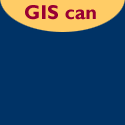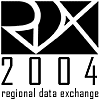

|
|
| ||
SRI Aims to "Map" the Internet with .geo Domain Nameby Adena Schutzberg, from GIS Monitor, October 26, 2000
SRI International, a nonprofit organization, has proposed .geo (pronounced "dot-gee-oh") as a method for geospatial referencing on the Internet to ICANN, the Internet naming body.
SRI was instrumental in the early development of the Internet, early routing protocols, and the implementation of the first wireless Internet transmission in 1977. So, it’s not that odd that they would be the ones suggesting a new, geographic top-level domain (TLD). A top-level domain is “what goes after the dot” in an Internet address: com, org, mil, edu, etc. There are many proposals to add new ones to help expand the choices of universal reference locators (URLs). In the most recent period, 44 applications (each for one or more TLD, at a cost of $50,000 just for the proposal) have been accepted by ICANN who will decide in mid-November which ones will be added.
SRI’s proposal is to add “.geo.” Its purpose, quoted from the proposal: “This new TLD will provide a complete, virtually free, and open infrastructure for registering and discovering georeferenced information on the Internet.”
According to an article in the San Jose Mercury News, the initiative grew out of two geospatial research projects -- TerraVision and Digital Earth. Research funds came from the Defense Advanced Research Project Agency (DARPA), the same agency that backed the ArpaNet, precursor to the Internet.
.geo is quite different from .org or .com. Domains like .com or .org) use HTML to put up web pages. If you use the .geo domain, you instead put geospatial metadata in a special “cell server”. Here’s another difference: end-users will not see the .geo address – it’s simply used by software when doing spatial searches.
I’ll be the first to admit when I read the press release, I did not understand what the goal of the new domain was or how it would work. Dr. Yvan Leclerc, Senior Computer Scientist and project director for the .geo initiative provided some clarification.
The Mechanics
The proposal suggests carving the world, based on latitude and longitude, into cells. The cells come in several sizes based on further dividing degrees, minutes, and maybe someday seconds. The geospatial metadata for a 10x10 degree cell, whose southwest corner is located at 20 degrees east, 30 degrees north, looks like this: quantum.20e30n.geo. The “quantum” part is called a “brand.” That is where competition will come in, since several different brands might serve that cell.
Each cell will be assigned to one or more “GeoRegistry.” GeoRegistries will “own” geographic cell servers and will be contractually obligated to provide services for the registration and discovery of geodata. The GeoRegistrar will determine the cell corresponding to the geographic location or area specified in the geodata according to the name schema, choose a GeoRegistry, and transmit the geodata record to the corresponding cell server(s) defined by the GeoRegistry name and geographic domain name. And, the GeoRegistry will charge a fee for registration that will be limited by the Sponsor (SRI).
Since more than one GeoRegistry may have cell servers assigned to the same cell, the Data Publisher (basically anyone who wants to register some data) might choose from various brands such as quantum, flash and tortoise. The metadata for the above cell would then be: quantum.20e30n.geo, flash.20e30n.geo or tortoise.20e30n.geo.
SRI argues that competition among GeoRegistries will be based on quality of service and other terms. And, in case there are no cell servers for a particular geography, there will be a default GeoRegistry, called “earth” which will be maintaining by one or more organizations.
Examples
I asked Dr. Leclerc to explain how my kite club, Kites Over New England (KONE), might use a .geo domain. He explained:
“You could indeed register geodata for events, places, or the geographic locations of your photos. For example, let's say you want to register the geographic locations of KONE's favorite [kiteflying] places. You would go to a specialized web site called a GeoRegistrar. There, for every one of your favorite places, you would” pay a small fee and “fill in a form that specifies the location, some keywords or phrases, such as "Kites Over New England" and "favorite places", and perhaps a URL pointing to a web page on your web site that describes what's great about that particular place. The GeoRegistrar would probably offer a map interface to make it easy for you to identify the precise location of your favorite place, since it's not likely to have an exact street address, like you might have for the headquarters of your club.”
“After submitting the form, the geodata you've just creating would be transmitted to the appropriate cell server, ready to be discovered by users. That is, people could then search for your events/places/photos by using the phrase "Kites Over New England" and the keywords "place" (or "event" or "photo" for your other examples).” And, I presume, some geographic parameter as well.
Dr. Leclerc also provided an example of how a seeker of spatial information would use .geo, though they’d not really “see” it. “To find the 5 closest pizza places to North Station in Boston, you would literally specify a search for keywords ‘pizza restaurant’ and location ‘North Station, Boston’. The search engine would first translate ‘North Station, Boston’ to a geographic location, and the search engine or plugin would then contact the appropriate cell servers and send the query ‘pizza restaurant’, and list the results in order of distance from ‘North Station, Boston’.“
Supporters
SRI posts several letters in support of the proposal from organizations such as the United Nations, the Association of European Travel Agents and NASA’s Digital Earth Office (although NASA Digital Earth requests that SRI not administer the domain, but act as secretariat with some worldwide commercial, government, not-for-profit groups as members).
I found little active support in the SRI sponsored or ICANN sponsored areas for comment.
Reactions to Excerpts of the Proposal
After reading the executive summary, I asked for some comments from the community. This week my comments, (AS) are included with those of Jim Meyer (JM), a PhD geographer, and Dmitri Rotow, (DR) product manager at Manifold.net. Next week, we’ll cover the proposal from the perspective of the OpenGIS Consortium.
Proposal: Online maps are a form of georeferenced information. These maps are inaccurate and often incomplete. They are also expensive to maintain, proprietary, and difficult for the average Internet user to use. Tellingly, more than 70 percent of adults cannot read maps. A new, more ubiquitous way of accessing, displaying, and working with georeferenced information is needed.
(JM) Indeed, it is sad that 70% of adults can't read maps, but how will presenting this info in 3D or with time series solve that problem? Access doesn't overcome illiteracy. How does that make it easier to comprehend and use?
(DR) It (the proposal) shows no technical comprehension of existing Internet naming conventions, but rather proposes a logically sideways move that causes more problems than it solves.
Proposal: It will not be a mapping convention, although it will be used to generate maps more complete than any on the Internet today. The .geo TLD, in combination with the Internet, will organically generate a dynamic universal atlas of natural and human phenomena - on land, beneath the waves, and in the skies (even in outer space).
(AS) Simply having a way of registering and searching for spatial information does not an atlas make. Similar reasoning would suggest that Yahoo! makes the Internet an encyclopedia. Encyclopedias and atlases compile, summarize and give context to information.
Proposal: Unlike proprietary mapping systems, the .geo schema will distribute the responsibility for locating georeferenced information, putting its control squarely in the hands of Data Providers rather than self-appointed second and third party intermediaries.
(AS) That is true, however, the key issue, at present still remains: interoperability. Even if .geo does in fact help find a piece of data of interest, it may be incompatible with your GIS. Proposal: With .geo, individuals and organizations that cannot now afford to have their information made searchable by location (especially with search engine providers now charging extravagantly for the privilege) will be able to do so.
(AS) I think we need to be realistic. Northern Light, among others, allows free registration of your site with them. They have a GeoSearch (US/Canada) that is applied, from what I understand, to all sites. Granted this is not yet worldwide and is dependant on “traditional” geocoding, but it is a start.
Proposal: Since end users' client software will be directed to the cells for given geographic areas, single points of failure or congestion will be eliminated.
(JM) What about when the "whole world" wants "be at" one cell at once, like the Olympics cell or the Academy Awards cell? Comments about the organization required to run .geo:
(DR) It is a formula for bureaucratization of geospatial data and restricting access thereto.
Comments on the technology:
(DR) It fails to take advantage of technical advances in networking, such as peer-to-peer organization of communications. On Economics:
(AS) I suppose that is true that GeoRegistries will compete, but they are all limited as to how high a price they can charge. My sense is, like current web hosting companies, the registration may become one of many services provided by the GeoRegistries, so they can make money. And, since they must do some “geocoding” to assign cells, I would imagine some of the leaders in that industry (ETAK, GDT, etc.) might step forward – or license their tools to aspiring GeoRegistries.
I think most of what SRI wants to do can be done without a new domain (and the money required to support it). Why not just put the metadata in existing .com, .org etc. pages? If you want to, you do, if you don’t want to, you do not. I’m sure some clever company or individual will provide an ASP to “geocode your pages” for a small fee. Then, search engines can, if they like, implement tools to take advantage of this information for spatial queries. That will require some “standards” certainly, but it certainly sounds simpler.
I’ll take a step further – I don’t think this proposal is really correctly aimed at ICANN, but rather at the geospatial community, people who seem conspicuously absent in these discussions.
Finally, Dmitri Rotow asks some questions to put geospatial information in context with other non-traditional data types:
“One way of seeing the…proposal is to ask how it would work for analogous data types that are far more popular than geospatial information....”
“Would we have a top level domain called .pic for images in this scheme? No! Would we have a top level domain called .mp3 for tunes in this scheme? No way! Would we have a top level domain called .video for moving pictures without sound? Nope!”
| ||


